During the middle part of the geological period, an asteroid collision took place 470 million years ago, somewhere between Mars and Jupiter. That collision caused an explosion that sent a cascade of meteorites towards Earth. The bombardment continued for millions of years, even today some of all meteorites that reach Earth originate from that asteroid break-up.
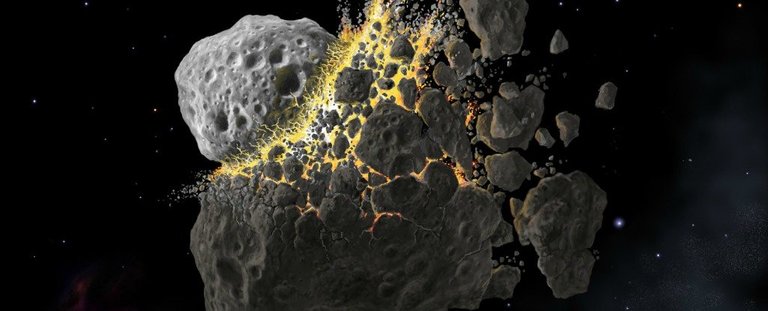
The stars look the same from night to night. Nebulae and galaxies are fully immutable, maintaining the same overall appearance for thousands or millions of years. Indeed, only the sun, moon and planets - together with the occasional comet, asteroid or meteor - seem dynamic. - Seth Shostak - Quote Source -
What is an impact event?
An impact event is a collision between astronomical objects causing measurable effects. Impact events have physical consequences and have been found to regularly occur in planetary systems, though the most frequent involve asteroids, comets or meteoroids and have minimal impact.
When large objects impact terrestrial planets like the Earth, there can be significant physical and biospheric consequences, though atmospheres mitigate many surface impacts through atmospheric entry. Impact craters and structures are dominant landforms on many of the Solar System's solid objects and present the strongest empirical evidence for their frequency and scale.
Throughout recorded history, hundreds of Earth impacts have been reported, with some occurrences causing deaths, injuries, property damage, or other significant localized consequences. One of the best-known recorded impacts in modern times was the Tunguska event, which occurred in Siberia, Russia, in 1908.
Philipp Heck from the Field Museum in Chicago said:
"Looking at the kinds of meteorites that have fallen to Earth in the last 100 million years doesn't give you a full picture. It would be like looking outside on a snowy winter day and concluding that every day is snowy, even though it's not snowy in the summer."
There are different types of meteorites: iron meteorites, stone meteorites, stony-iron meteorites.
Iron meteorites were once part of the core of a long-vanished planet or giant asteroid and square measure believed to own originated at intervals the belt between Mars and Jupiter. They are among the densest materials on earth and can stick terribly powerfully to a robust magnet.
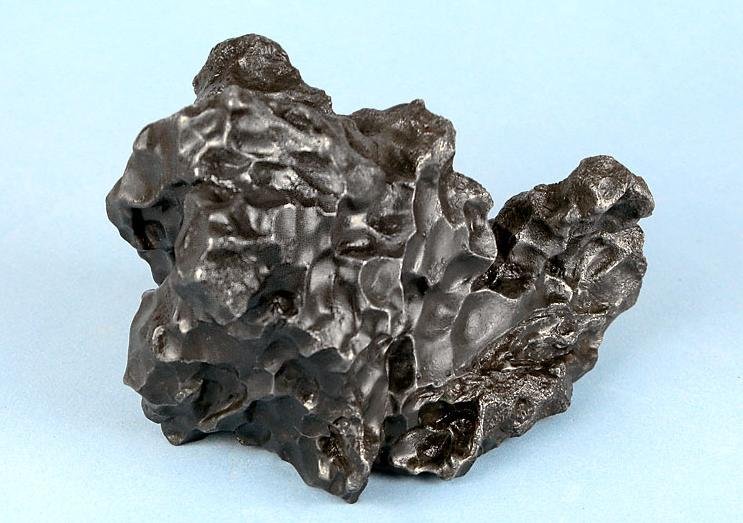
A superb 1,363-gram complete iron meteorite from the Sikhote-Alin meteorite shower which occurred in a remote part of eastern Siberia in the winter of 1947. This fine specimen is described as a complete individual, as it flew through the atmosphere in one piece, without fragmenting. Its surface is covered with scores of small regmaglypts, or thumbprints, created by melting during flight.
The largest group of meteorites is that the stones and they once formed a part of the outer crust of a planet or asteroid. Many stones meteorites-particularly those that are on the surface of our planet for Associate in Nursing extended the amount of your time often look very similar to terrestrial rocks, and it can take a hot eye to identify them once meteor searching within the field.
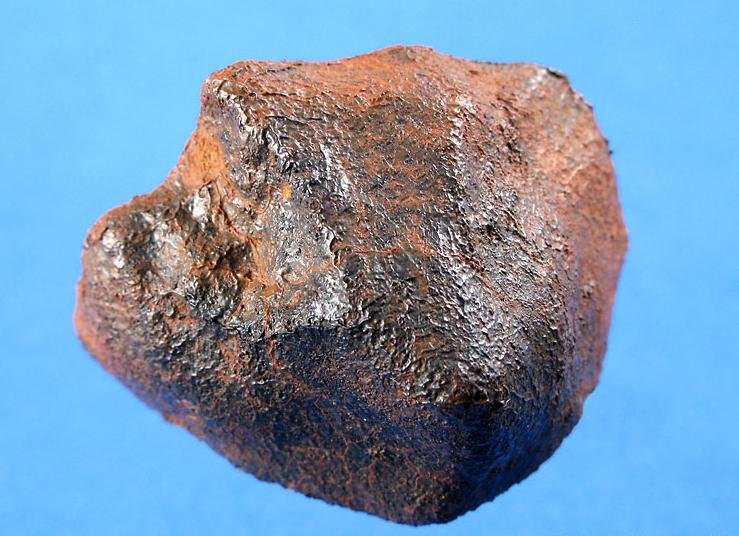
A 56.5-gram complete individual of the Millbillillie eucrite from Australia. It was a witnessed fall (1960) and is a rare type of achondrite—a stone meteorite which does not contain chondrules. Eucrites are volcanic rocks from other bodies in the solar system, and Millbillillie is one of the very few meteorites which does not contain iron-nickel.
The least abundant of the 3 main varieties, the stony-irons, account for less than 2% of all famed meteorites. They square measure comprised of roughly equal amounts of nickel-iron and stone and are divided into 2 groups: pallasites and mesosiderites. The stony-irons are thought to have shaped at the core boundary of their parent bodies.
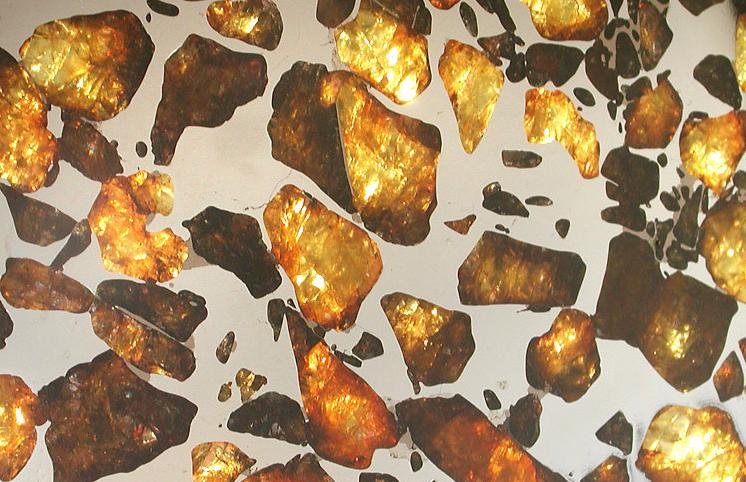
A sea of gold and orange olivine crystals (the gemstone peridot) lie suspended in a matrix of extraterrestrial iron-nickel in this polished slice of the Imilac pallasite, first discovered in Chile's remote Atacama Desert in 1822. When properly prepared, pallasites are among the most alluring of meteorite, and are highly prized by collectors, both because of their rarity and beauty.
In financial terms Lunar and Martian specimens are among the most valuable meteorites, often selling on the collectors' market for up to $1,000 per gram.
Another amazing mineral known is zircon
Zircon is a mineral belonging to the group of nesosilicates. Its chemical name is zirconium silicate and its corresponding chemical formula is ZrSiO4. Zircon forms in silicate melts with large proportions of high field strength incompatible elements.
Zircons square measure special as they'll be accustomed date rocks. They come from rock chambers within the crust, however, are extruded onto surface through volcanic eruptions.

Zircon crystal from Tocantins, Brazil (2×2 cm)
Birger Schmitz from Lund University in Sweden explained:
"We knew almost nothing about the meteorite flux to Earth in geologically deep time before this study. The conventional view is that the Solar System has been very stable over the past 500 million years. So it is quite surprising that the meteorite flux at 467 million years ago was so different from the present."
This means that Earth has seen the same type of meteorite for the last 466 million years. As you can most likely imagine, finding 466 million-year-old rocks on a planet made of rock is powerful. So the team set to investigate micrometeorites, which they excavated from a river bottom in Russia and dissolved in acid to see what sorts of crystals remained. To figure out where micrometeorites came from, the team was looking for chrome-spinels, wich act like time capsules.
Heck explained:
"Chrome-spinels, crystals that contain the mineral chromite, remain unchanged even after hundreds of millions of years. Since they were unaltered by time, we could use these spinels to see what the original parent body that produced the micrometeorites was made of.''
In fact, the history of Earth’s meteorite flux is solely currently changing into best-known.
William Bottke, from the Southwest Research Institute in Colorado said:
"Meteorite delivery from the asteroid belt to the Earth is a little like observing landslides started at different times on a mountainside. Today, the rocks reaching the bottom of the mountain might be dominated by a few recent landslides.
Going back in time, however, older landslides should be much more important. The same is true for asteroid breakup events; some younger ones dominate the current meteorite flux, while in the past older ones dominated."
A better understanding of Earth’s meteorite flux will give us a better understanding of the Solar System as a whole.

Evidence of 2 billion years of volcanic activity on Mars
Analysis of a meteorite found in Africa revealed evidence of volcanic activity on Mars. This confirms that among the longest volcanoes in the solar system can be found on the Red Planet.
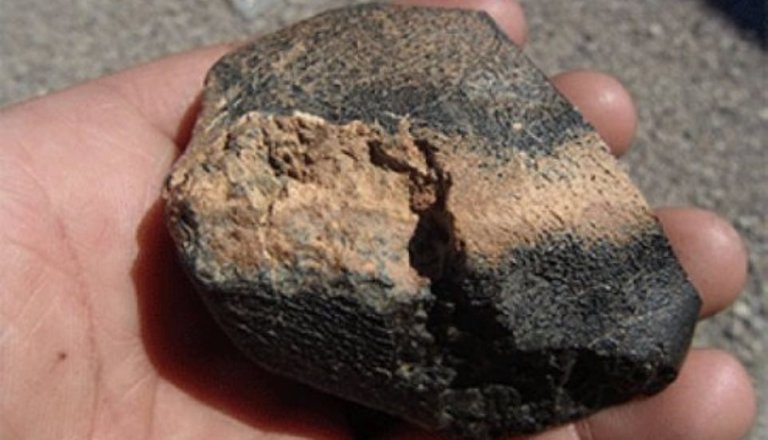
Tom Lapen, a professor of geology at the University of Houston, noted that this discovery provides new clues about the evolution of the planet and Martian volcanic activity. Most clues about the composition of rocks on Mars are from meteorites that reached the Earth's surface. Analysis of different substances provides information about the age of the meteorite, the source, who spent time in space and on Earth during that state.
In a million years ago, an object was hit by the surface of Mars, ejecting volcanic rocks in space, and some have landed on the surface. It was found that the meteorite, called Northwest Africa 7635, is a type of volcanic rock called sergotit. There were found 11 such meteorites, with a composition similar to Earth's surface.
The researchers concluded that are originate from the same source. The other meteorites has the age from 327 to 600 million years old. But, this stone has 2.4 billion years, indicating one of the longest volcanoes in the solar system.
Thank you very much @hilarski!